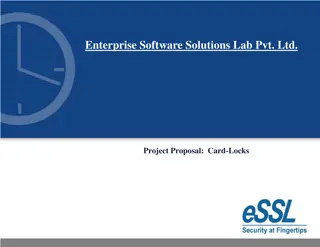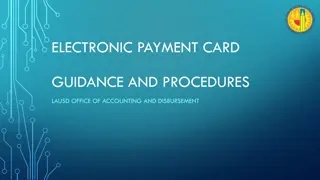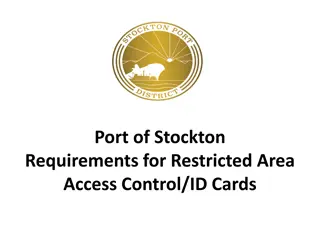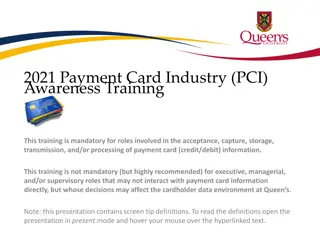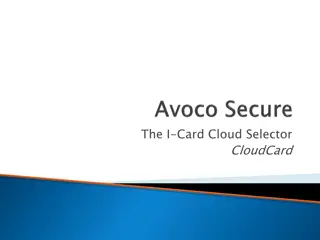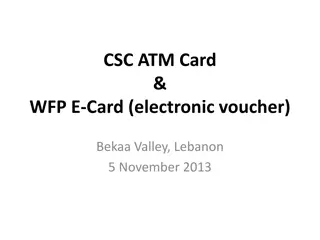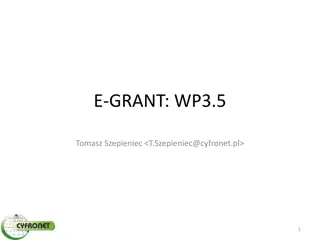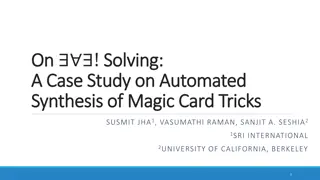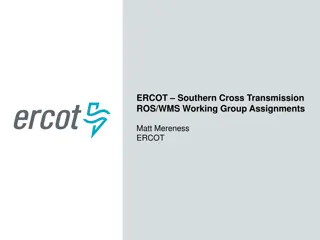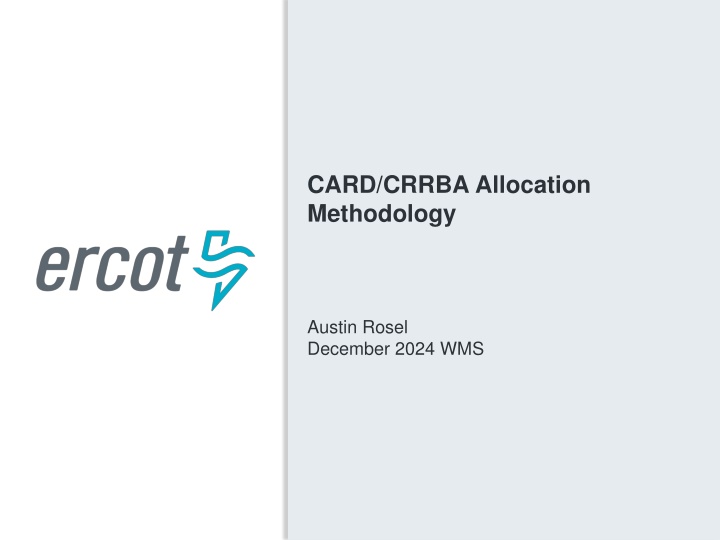
ERCOT Analysis of CARD Allocation Options for Incentivizing Economic Behavior
ERCOT conducted an independent analysis on three options for adjusting the allocation of revenues from CRR auctions to address the issue of incentivizing uneconomic behavior. The analysis compares the impact on class allocation under different approaches and highlights ERCOT's primary objective of addressing the problem at hand. The options proposed by Vistra and IMM are preferred by ERCOT due to their straightforward nature, while concerns remain regarding the City of Georgetown's proposal. The analysis encompasses the time period from June 1, 2023, to May 31, 2024, and includes zonal CARD and CRRBA processes.
Download Presentation

Please find below an Image/Link to download the presentation.
The content on the website is provided AS IS for your information and personal use only. It may not be sold, licensed, or shared on other websites without obtaining consent from the author. If you encounter any issues during the download, it is possible that the publisher has removed the file from their server.
You are allowed to download the files provided on this website for personal or commercial use, subject to the condition that they are used lawfully. All files are the property of their respective owners.
The content on the website is provided AS IS for your information and personal use only. It may not be sold, licensed, or shared on other websites without obtaining consent from the author.
E N D
Presentation Transcript
CARD/CRRBA Allocation Methodology Austin Rosel December 2024 WMS
Problem to Solve Revenues from CRR Auctions are allocated to load on a peak interval basis. CRR Revenues for the month are allocated to the load ratio share during the peak 15-minute settlement interval for the month. ERCOT brought forward a concern that this allocation methodology could encourage uneconomic behavior. Loads that are controllable could increase consumption during the peak interval in order to capture this revenue. This is similar to the issue that was addressed in NPRR1030 for DC-Ties, where a DC-Tie could schedule increased exports in order to capture this revenue. 2 PUBLIC
Options WMS and WMWG have coalesced around three options for adjusting the allocation. Vistra Allocate on a load ratio share of a subset of highest load hours by taking the top 60 hours for the month combined with top 4 hours from the top 15 days. IMM Allocate revenues based on the load ratio share of the top 500 peak hours for the month. City of Georgetown Allocate CARD revenues based on the 4CP values from the previous year. 3 PUBLIC
ERCOT Opinion ERCOT prefers the options presented by Vistra and the IMM. These options address the problem to solve and are more straightforward to understand, implement and maintain over the long term. Conceptually, the City of Georgetown proposal has evolved to address ERCOT s primary concern, but lingering questions remain on the effects of this approach in practice. Linking two allocation mechanisms that are not related, in terms of how dollars are collected or allocated, may cause unintended consequences and incentives. Future policy changes to either mechanism or changes in revenue levels that could impact incentives would need to be monitored for cross-impact. This method is the most complicated to implement due to the lag of using the previous years 4CP values for current year allocation as well as the continued need to implement 4 PUBLIC
Requested Analysis At the November WMWG there was a request for ERCOT to provide independent analysis on the options presented, looking at how these different approaches could affect the amount of CARD allocated to different customer classes. It s worth noting that preserving the allocation amongst the classes was not necessarily our goal in discussing this issue. ERCOT s primary objective is to address the problem of incentivizing uneconomic behavior. The following slides provide an independent analysis by ERCOT of the change to class allocation under the three options to support the WMWG request. Also, ERCOT has included the same analysis performed as if there were no zonal allocations of revenue, if all allocation was system wide. 5 PUBLIC
ERCOT Analysis Time Period: 06/01/2023 - 05/31/2024 CARD & CRRBA Allocation - Includes Zonal CARD Process Currrent 4CP MW Vistra IMM COG* Residential 24.6% 29.1% 22.7% 19.8% 33.8% Small Commercial 15.8% 16.5% 15.6% 15.7% 17.0% NOIE 29.8% 31.0% 28.9% 28.0% 28.5% Large C&I 29.8% 23.4% 32.8% 36.5% 20.8% Total 100.0% 100.0% 100.0% 100.0% 100.0% CARD & CRRBA Allocation - System Wide Currrent 4CP MW Vistra IMM COG Residential 28.5% 33.8% 26.4% 23.1% 33.8% Small Commercial 16.5% 17.0% 16.4% 16.6% 17.0% NOIE 28.0% 28.5% 27.0% 25.9% 28.5% Large C&I 27.0% 20.8% 30.1% 34.4% 20.8% Total 100.0% 100.0% 100.0% 100.0% 100.0% * The COG proposal removes the Zonal CARD process. 6 PUBLIC
ERCOT Methodology for Analysis First table: Calculated Non-Zonal CARD and BA revenues by class Calculated the Zonal CARD revenue by class and Zone Added the above two steps together Calculated a ratio share based on total revenue by class Last table: Assumed all revenue was Non-Zonal Calculated the total revenue by class Calculated a ratio share based on total revenue by class 7 PUBLIC


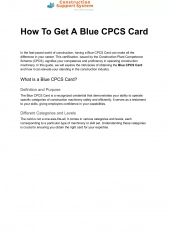
![Guardians of Collection Enhancing Your Trading Card Experience with the Explorer Sleeve Bundle [4-pack]](/thumb/3698/guardians-of-collection-enhancing-your-trading-card-experience-with-the-explorer-sleeve-bundle-4-pack.jpg)
